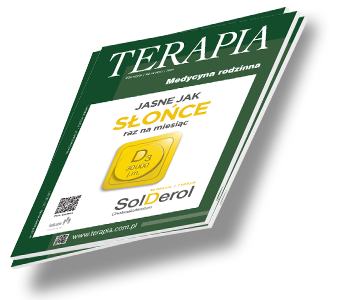Niewydolność serca Terapia 2021, 9 ( 404 ) : 38 - 46
Antagoniści aldosteronu – który wybrać w niewydolności serca?
Aldosterone antagonists ‒ which one to choose for heart failure?
Niewydolność serca ‒ epidemiologia i znaczenie w zdrowiu publicznym
Niewydolność serca (NS) jest istotnym problemem klinicznym. Szacuje się, że w 2017 roku na świecie na NS chorowało 64,3 miliona ludzi (95% UI: 57,2‒71,6), z czego 34,8 miliona z nich (95% UI: 30,9‒39,1) stanowiły kobiety, natomiast 29,5 miliona (95% UI: 26,3‒32,9) mężczyźni. Szacowana częstość występowania NS w 2017 roku na świecie wynosiła 831 (95% UI: 738,6‒926,2) /100 000 osób (1). Występowanie NS w istotny sposób zwiększa ryzyko przedwczesnego zgonu. W ba-daniu Jones i wsp. wykazano, że wskaźnik przeżycia chorych z NS ulegał zmniejszeniu wraz z upływem czasu, z 86,5% po roku od rozpoznania NS do 34,9% po 10 latach (2).

Zaloguj się i przeczytaj bezpłatnie całą treść artykułu.
Nie masz jeszcze konta dostępowego?
Zarejestruj się bezpłatnie, a otrzymasz:
* dostęp do wszystkich doniesień oraz pełnych tekstów artykułów naukowych w naszej Czytelni,
* prawo do bezpłatnego otrzymywania newslettera "Aktualności TERAPIA" z przeglądem interesujących i przydatnych wiadomości ze świata medycyny oraz systemu ochrony zdrowia w Polsce i na świecie,
* możliwość komentowania bieżących wydarzeń oraz udziału w ciekawych quizach i konkursach.
Zapraszamy serdecznie, dołącz do naszej społeczności.



Dodaj komentarz